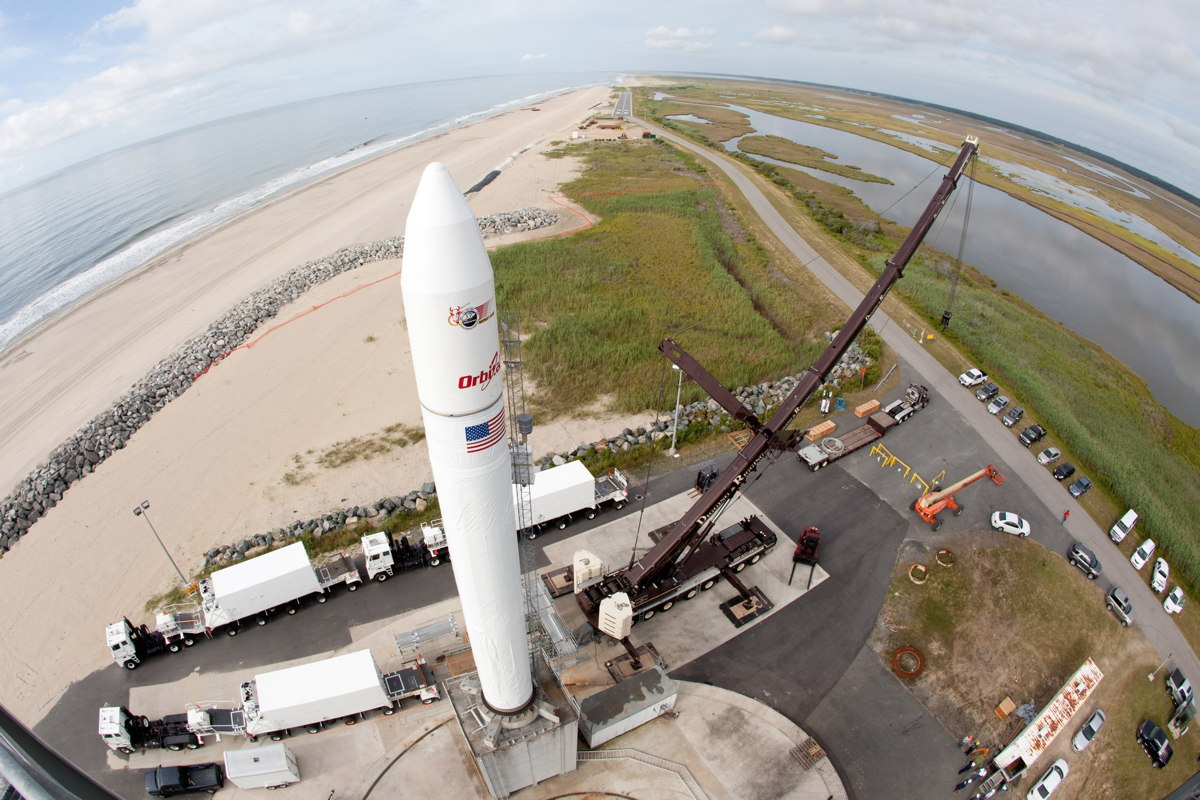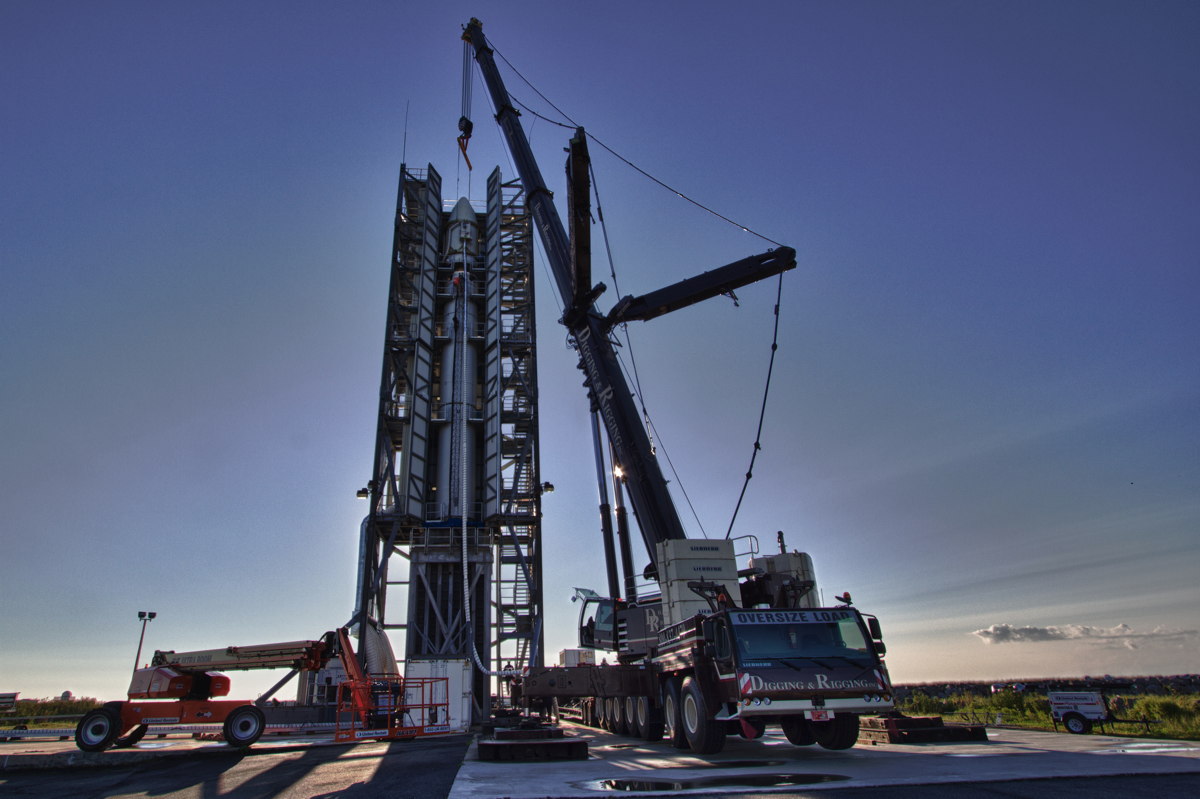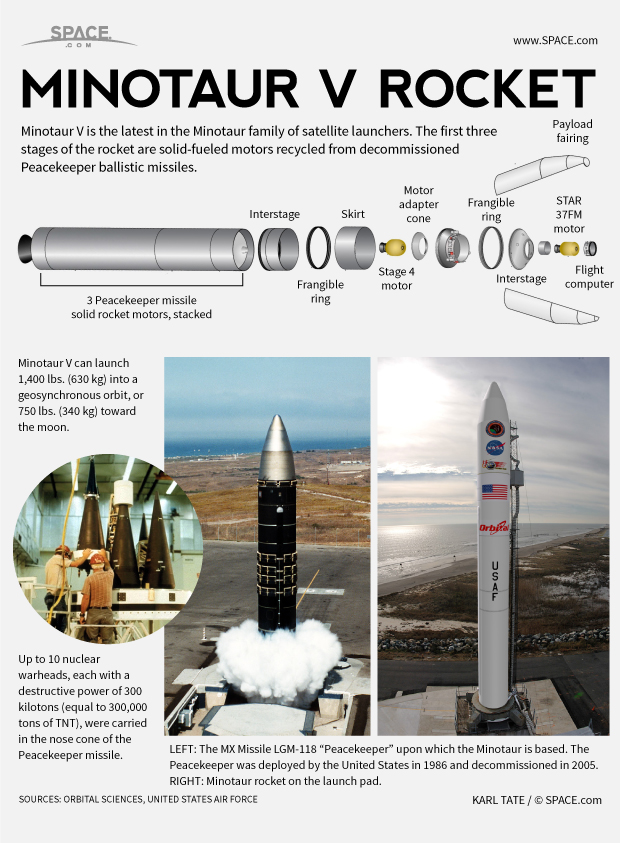
A new American rocket will make a very high-profile debut Friday (Sept. 6) when it blasts a NASA probe toward the moon.
A Minotaur V rocket will carry NASA's Lunar Atmosphere and Dust Environment Explorer spacecraft (LADEE) on its maiden launch, which is slated to take place Friday at 11:27 p.m. EDT (0327 GMT) from the space agency's Wallops Flight Facility in Virginia.
While the Minotaur V, built by Virginia-based aerospace firm Orbital Sciences, has never left the ground, it's not entirely untested. The vehicle basically adds a fifth stage to Orbital's Minotaur IV rocket, which has been flying since 2010. [The World's Tallest Rockets: How They Stack Up]

"The fifth stage is the new element in the mission; it's required to get LADEE into the orbit it needs to get to the moon," Wallops launch manager Doug Voss said in a press briefing on Aug. 22. "The innovative aspects of this mission are there in the Minotaur V fifth stage, but individually none of the technologies are new. So there are a lot of proven concepts folded into a new vehicle."
The first three stages of the Minotaur V (and the Minotaur IV) are solid rocket motors recycled from decommissioned Peacekeeper intercontinental ballistic missiles. The fourth and fifth stages are commercial Star motors, which are also flight-proven, Voss said.
With LADEE aboard, the Minotaur V launch vehicle stands about 80.6 feet (24.6 meters) tall and is 7.6 feet (2.3 m) across at its widest point. The rocket weighs 197,034 pounds (89,373 kilograms) when fully fueled, NASA officials said.

The Minotaur V can launch payloads of up to 750 pounds (340 kg) toward the moon, and it can put satellites weighing up to 1,400 pounds (630 kg) into a geosynchronous transfer orbit, according to an Orbital Sciences fact sheet.
Get the Space.com Newsletter
Breaking space news, the latest updates on rocket launches, skywatching events and more!
The $280 million LADEE mission aims to study lunar dust and the moon's wispy atmosphere from orbit using three science instruments.
It will take LADEE about 30 days to reach the moon, at which point the spacecraft will undergo 30 days of checkouts and commissioning. After conducting science operations for 100 days, LADEE will end its life by crashing into the lunar surface.
The Minotaur V's debut flight is not the only history-making aspect of Friday's launch. It will also mark the first time a lunar mission blasts off from Wallops, which has never launched a spacecraft beyond Earth orbit in nearly 70 years of liftoffs.
"LADEE is a historic moment," Voss said.
Editor's note: Weather permitting, Friday's launch could be visible across wide regions of the U.S. East Coast. If you snap an amazing photo of the LADEE launch or any other night sky view that you'd like to share for a possible story or image gallery, please send images and comments, including equipment used, to managing editor Tariq Malik at spacephotos@space.com.
Follow Mike Wall on Twitter @michaeldwall and Google+. Follow us @Spacedotcom, Facebook or Google+. Originally published on SPACE.com.
Join our Space Forums to keep talking space on the latest missions, night sky and more! And if you have a news tip, correction or comment, let us know at: community@space.com.

Michael Wall is a Senior Space Writer with Space.com and joined the team in 2010. He primarily covers exoplanets, spaceflight and military space, but has been known to dabble in the space art beat. His book about the search for alien life, "Out There," was published on Nov. 13, 2018. Before becoming a science writer, Michael worked as a herpetologist and wildlife biologist. He has a Ph.D. in evolutionary biology from the University of Sydney, Australia, a bachelor's degree from the University of Arizona, and a graduate certificate in science writing from the University of California, Santa Cruz. To find out what his latest project is, you can follow Michael on Twitter.









